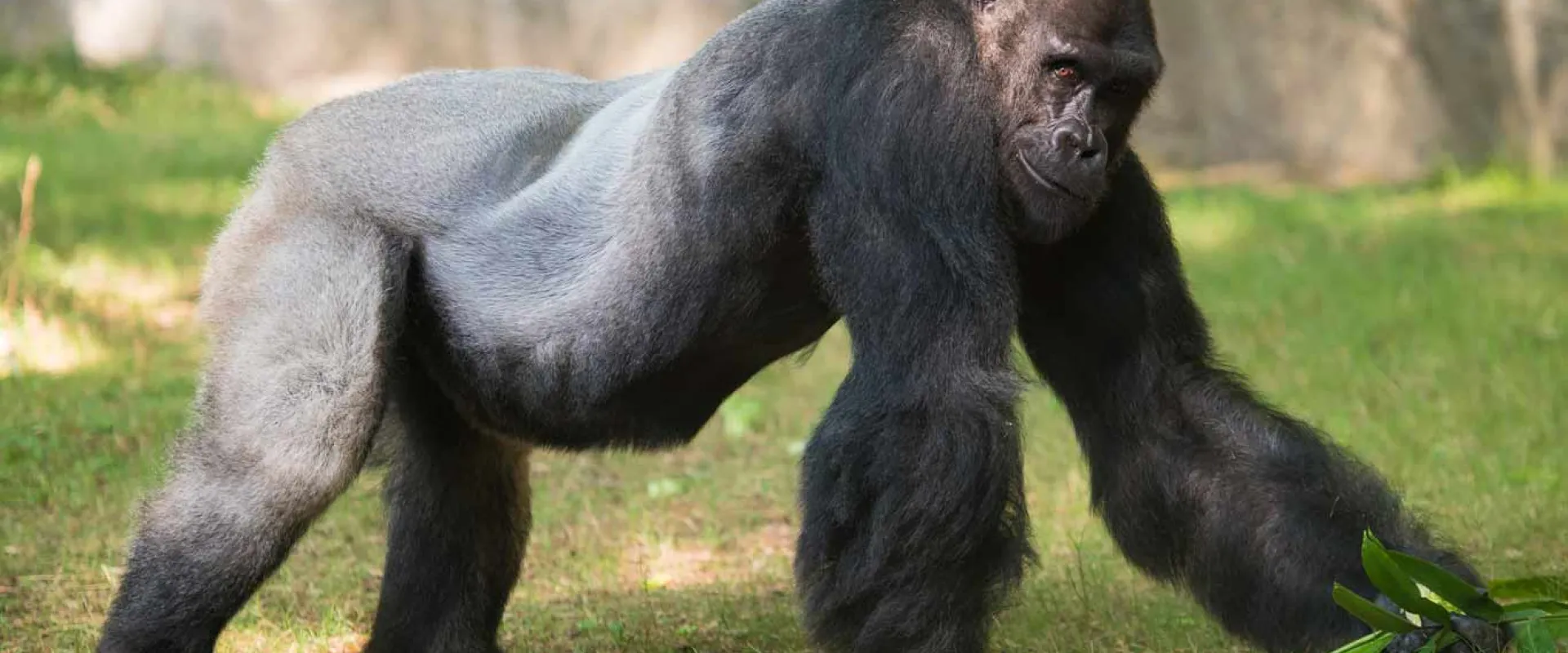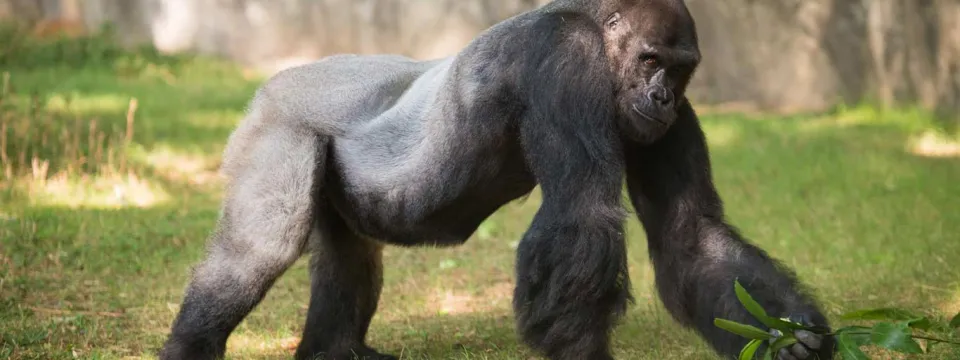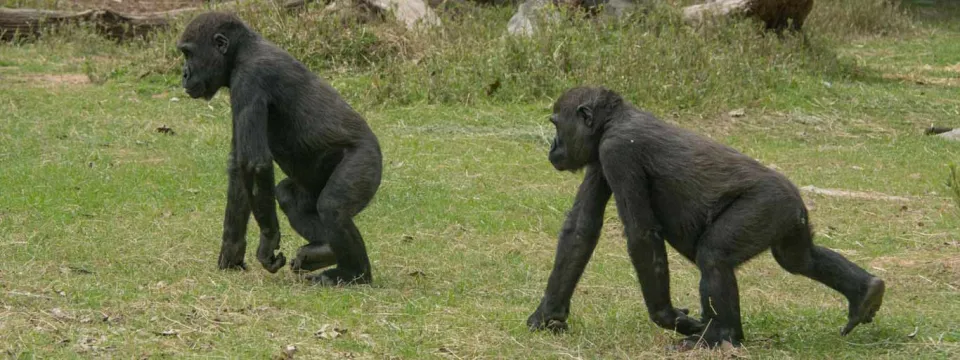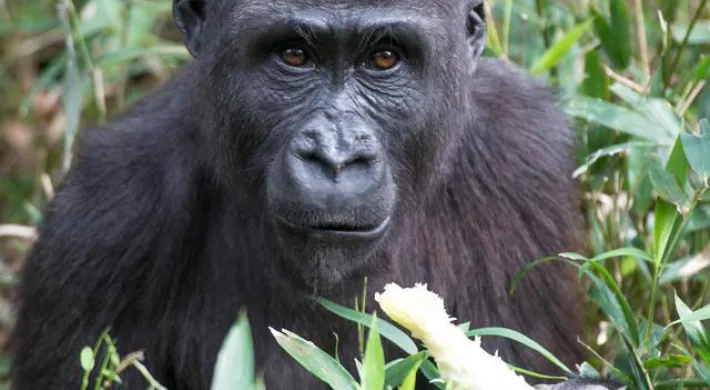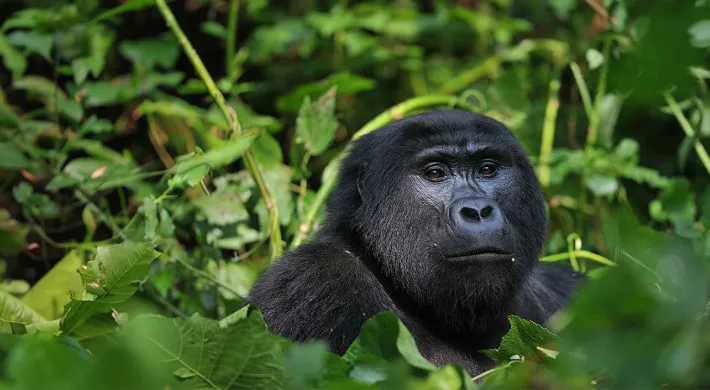Written by Emily Lynch, PhD, Associate Curator of Research, North Carolina Zoo
When you visit the Zoo, you might observe that not all animals move around their habitats in the same way. Primates, the group to which we humans belong, are unique in the way we move because our hands and feet can be used in different ways: The lemurs use four limbs to walk on and jump from tree branch to tree branch. The baboons walk on flat hands and feet. The gorillas move on the knuckles of their hands and flat feet. But, perhaps most striking of all, us humans only use our feet to walk, referred to as "bipedalism."
One big question that scientists have been trying to tackle for decades is how and why our bipedalism evolve? In other words, what were the circumstances that led our ancestors to walk on only two feet and not use our hands for any help? Or, more specifically, what type of ape movement gave rise to our bipedal locomotion? These questions are important because not only is our reliance on bipedalism unique among primates, it may have facilitated the evolution of our big brains.
Notice the long stride of the silverback above
Common wisdom has suggested that our gait must have evolved from some ancestor that moved like a modern chimpanzee because we are more genetically related to chimpanzees than to gorillas. Chimpanzees display movements such as coming down from the trees, with long arms and short hind legs (the perfect proportions for an animal swinging in the trees). However, fewer people think of a more gorilla-like ancestor for our walking or an animal spending more time on the ground. The question is: which type of locomotion did our ancestors use?
Researchers Dr. Angel Zeininger and Dr. Daniel Schmitt from Duke University and their colleague Dr. Roshna Wunderlich from James Madison University recognized an opportunity to explore these questions in collaboration with the North Carolina Zoo. Because the Zoo houses our closest living relatives, gorillas, and chimpanzees, with funding from the National Science Foundation, Daniel and Angel devised a plan to carefully measure how these animals move to improve our understanding of ape locomotion and hopefully reveal something about our own origins.
From a methodological standpoint, however, measuring the movements of apes can be quite challenging. How do we measure the locomotion of these very large, heavy, and strong animals? A durable and secure device would have to be built into the ground to capture and measure the animals' gait and foot pressure. The Zoo's Animal Management Supervisors, Jodi Wiley, and Chris Goldston, helped the team find a spot in their habitat large enough to accommodate one full stride (about 12 feet!) of the largest gorilla, our silverback male Mosuba.
A pressure pad (think of a Dr. Scholl's shoe insert), placed over a force plate, was built into a steel frame and secured into the ground. When an animal walks across this "instrumentive runway," the pressure pad captures where the pressure from the step occurs through a color map, and the force plate measures force in 3 dimensions (up and down, side to side, and front to back). Combined with filming the animals as they walk over the runway, Daniel and Angel were then able to compare the animal's position with the force and pressure measurements captured by the runway.
Angel, Roshna, and Daniel captured the movements of six of the Zoo's gorillas, ranging in age from 6 to 34 years old. From this work, two important findings emerged.
First, they found that gorilla locomotion, overall, resembles that of humans, where the knee and foot movements follow a similar pattern.
Second, they report that the younger gorilla's movements closely mirror those of young humans, suggesting their locomotion develops in the same ways as us.
Together, these results suggest that our unique form of bipedalism may have evolved from something more gorilla-like! This exciting finding will illuminate alternative ways of thinking about our evolutionary trajectory and the origins of our unique gait.
Juvenile gorillas knuckle walking
While projects like this directly contribute to and advance scientific inquiry, they also improve our animals' care. Understanding the locomotor health of individual apes allows us to monitor their well-being closely. It can guide management decisions on which substrates (or surfaces, such as soil or gravel) should be included or changed in the habitats. So, in the end, Angel, Roshna, and Daniel were not only able to open the door to some new and exciting avenues of research to understand the origins of human bipedalism, but they also were able to help us improve our animal care .
